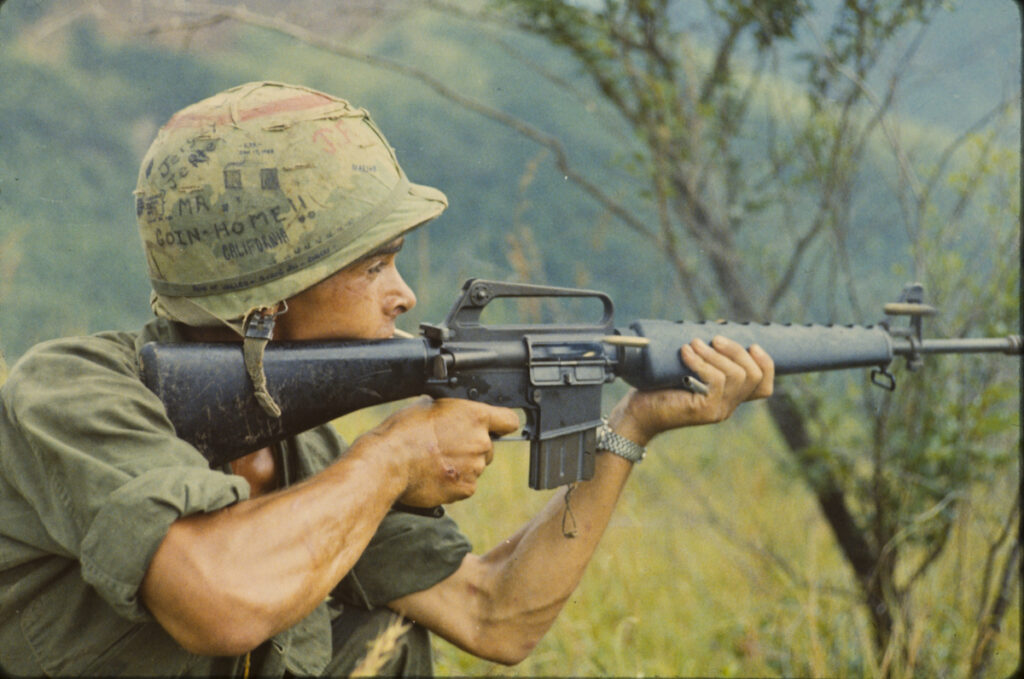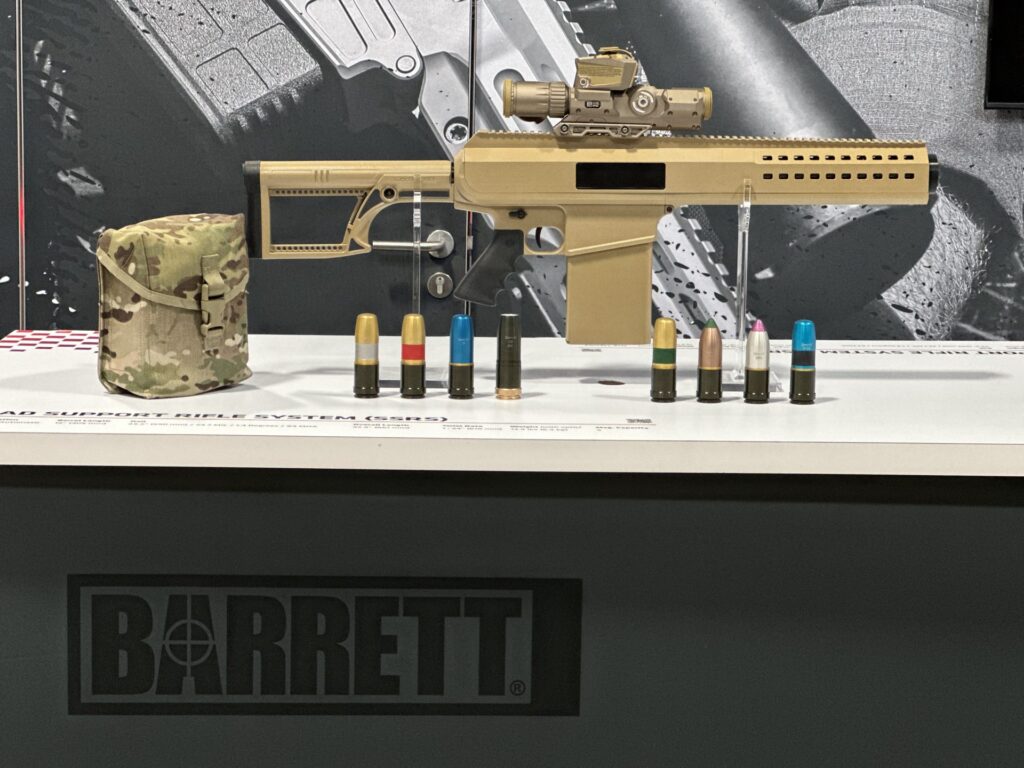This is why the iconic M16 rifle has served for so long
- By Travis Pike
Share This Article

Eugene Stoner and the folks at Armalite designed the AR-15 all the way back in 1956. It would be another six years before the U.S. Air Force would adopt the firearm, and a few years later, its M16 iteration would go on to become the weapon of choice for the entire United States military.
However, its adoption wasn’t without controversy.
The Army Material Command initially rejected the weapon for the M14. Yet, an investigation launched by Secretary of the Army Cyrus Vance found that the test was rigged from the start as the Army Material Command used match-grade M14s against out-of-the-box M16s disadvantaging the M16.

Later, when the M16 hit Vietnam, troops were wrongly told the weapon didn’t need to be cleaned so cleaning kits weren’t issued. Additionally, the Army used the wrong propellant in the 5.56 ammo, which created reliability issues.
All these incidents gave the M16 a terrible reputation that continues to plague it, mostly propelled by the uninformed.
However, the success of Stoner’s design has been undeniable and today we will investigate the weapon’s longevity and success.
The simple answer
There’s a very simple answer to explain the M16’s dominance: There isn’t anything better. Sure, some rifles offer some slight improvements over the M16, but these aren’t substantial enough to justify completely changing rifles for an entire military force.
For example, rifles like the SCAR Mk 16 were super hot for a short period but never overtook the M4 (which is a shortened version of the M16). In testing, the SCAR proved to be slightly more reliable than the M4, with fewer stoppages in 6,000 rounds, but only fractionally so. Yet, even when special operations communities had the option to choose between the SCAR and the M4, they still chose the M4.

Over the years, the Army tried to replace the M16 and M4 series with the Advanced Combat Rifle program, the Objective Individual Combat Weapon program, and the XM8 program. They even tried to replace the M16 in the middle of the Vietnam War when they tested the Stoner 63.
However, try as they might, the M16 always stuck around.
Related: The weird world of the Thompson SMG variants
It’s just a good rifle
During the Cold War, the world moved away from the heavy battle rifle calibers that were used in World War II to the assault rifle concept. The Soviets transitioned first with the AK series, and sometime later, the Americans saw the light too, and eventually Western forces were standardized on 5.56 caliber rifles.

The simple fact of the matter is there are only a few ways to send a 5.56 round downrange, and the M16 is pretty good at doing just that. In terms of small arms, we’ve been at a plateau for quite some time. Major innovations aren’t rolling in, and the world seems to have settled on the intermediate-caliber assault rifle as the main military firearm.
As far as intermediate-caliber assault rifles go, the M16/M4 is an excellent rifle. The design is small and rather lightweight. It’s cheap to produce and surprisingly accurate for a military rifle. Further, the rifle’s direct impingement operating system is very reliable. Lastly, the 5.56 cartridge is quite lethal but is also lightweight, which allows troops to carry more ammo.
Related: These are the 5 best service rifles the US military has ever had
Modularity is always a good thing

The M16s fielded during Vietnam look a lot different than the URGI rifle or the Mk 18 of the Global War on Terror. Stoner’s M16 was designed to be easily mass-produced, and by happy accident, it also turned out to be easy to adapt. Over the years, the M16 turned into the carbine-length M4 and the even shorter rifles used by special operations forces.
The M16 itself went through several generations, with steady improvements made to the point where the weapon could easily accept optics, lights, lasers, and more. Rifles like the Mk 12, designated marksman’s rifle, were built from the Stoner design which had become well known for its modularity and ability to evolve and adapt as needed.
The end of the M16
The Stoner design has been the military’s service rifle in one form or another from 1962 up until today.
Yet, the rifle’s end has been signaled with combat arms forces replacing the M16 family of rifles: The Marine Corps adopted the M27 IAR for its combat arms forces, and the Army recently finished the Next Generation Squad Weapon contest and settled on the SIG Spear in a new, rather hot caliber. (Support roles are seemingly keeping with the Stoner rifle for the time being.)
Nevertheless, although the M16 and its legacy designs are slowly being replaced, they will continue to serve for at least several more years.
The M16 has had a very successful life as a service rifle, and even its replacements are largely influenced by it and its AR-15 progenitor. It’s one of the most influential rifles ever made and has certainly served its country of origin well.
Read more from Sandboxx News
- Alaska paratroopers get a secret weapon for the Arctic: beards
- Ukraine trolls Russia and pro-Putin Limp Bizkit frontman at the same time
- Ukrainian pilots are training to fly F-16s. Here’s what we know
- Visiting the impressive National Infantry Museum
- Stuxnet unleashed: The tactics behind the world’s first cyberweapon
Related Posts
Sandboxx News Merch
-

‘Sandboxx News’ Dad Hat
$27.00 Select options This product has multiple variants. The options may be chosen on the product page -

‘AirPower’ Golf Rope Hat
$31.00 Select options This product has multiple variants. The options may be chosen on the product page -

F-35 ‘Lightning’ Framed Poster
$45.00 – $111.00 Select options This product has multiple variants. The options may be chosen on the product page

Travis Pike
Travis Pike is a former Marine Machine gunner who served with 2nd Bn 2nd Marines for 5 years. He deployed in 2009 to Afghanistan and again in 2011 with the 22nd MEU(SOC) during a record-setting 11 months at sea. He’s trained with the Romanian Army, the Spanish Marines, the Emirate Marines, and the Afghan National Army. He serves as an NRA certified pistol instructor and teaches concealed carry classes.
Related to: Gear & Tech

The Switchblade, loitering munitions, and the new terrifying face of warfare

5 ways to prepare and survive the Marine Corps boot camp

Barrett’s Squad Support Rifle System will make infantry squad deadlier
Sandboxx News
-

‘Sandboxx News’ Trucker Cap
$27.00 Select options This product has multiple variants. The options may be chosen on the product page -

‘AirPower’ Classic Hoodie
$46.00 – $48.00 Select options This product has multiple variants. The options may be chosen on the product page -

‘AirPower’ Golf Rope Hat
$31.00 Select options This product has multiple variants. The options may be chosen on the product page -

‘Sandboxx News’ Dad Hat
$27.00 Select options This product has multiple variants. The options may be chosen on the product page
